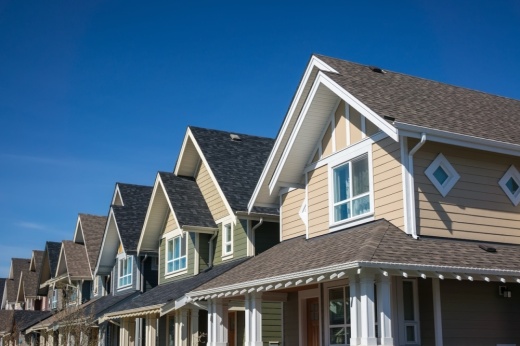The big picture
Adjusting building limits in most areas reserved for single-family uses would affect properties covering a majority of the city and may end up being among the most significant land use changes for Austin since a wide-ranging land development code rewrite was halted.
This year, officials' stated attempt to tackle housing production and affordability also started the process of eliminating parking requirements for new development and reducing the influence of residential homes on nearby construction.
The single-family item drew almost 300 Austinites to register for or against the measure at City Council's July 20 meeting ahead of a 9-2 vote for the proposal from Council Member Leslie Pool. The topic was in focus for a large portion of the more than five hours of public commentary, which was largely split across generational lines.
Proposed changes include:
- Cutting the minimum lot size required for single-family housing from 5,750 square feet to 2,500 square feet or less
- Allowing the addition of three units or more on all single-family lots by right
- Creating a new three-family residential use to bring more “flexible housing configurations” to single-family zoning
Pool, who called her resolution the Home Options for Middle-income Empowerment, or HOME, initiative, said she hopes it'll produce affordable options for middle-class families by removing time and cost barriers for the development of smaller, cheaper homes. She's also said the change could eventually create more townhouses, row homes or cottage courts across the city, citing the master-planned Mueller community as an example of integrating more diverse housing types in Austin.
“The status quo of limited housing options is not sustainable in this current environment,” Pool said in a statement. “We can do so much better for teachers, first responders, small-business employees, construction employees, government workers, and nurses—people who have good jobs but can’t afford to invest in our city.”
What they’re saying
Supporters in the community and on the council dais said reducing Austin’s minimum lot size and allowing for a variety of homes in single-family areas is a significant step for lowering housing costs and making the city's pricey housing market more accessible.
“You should not have to choose between staying in the city and having a family,” resident David Fouts said. “I couldn’t afford the larger-lot single-family homes in my neighborhood. Because of the small lot, I am a homeowner.”
Several organizations, from AARP Texas and the Austin EMS Association to local housing and real estate associations, also backed the measure and said it will support their members and Central Texans as housing costs continue to price people out of town.
Mayor Pro Tem Paige Ellis, a co-sponsor on Pool's measure, said the change is aimed at opening Austin up for a new generation of residents and homeowners.
“I can’t help but think about a lot of folks who say, ‘I worked really hard. I’m proud of what I built; I built a life here, and I love my community.’ And people who are saying, ‘I’m trying to build my life here, and I can’t make it,’’ she said.
Opponents expressed concern about the policy's potential impacts on neighborhoods and whether new allowances will encourage developers to buy up land for pricier projects instead of boosting affordability. Several also worried about increasing strain on local infrastructure and potential displacement effects in established communities.
“Their lots will be chopped into smaller pieces; their property values will soar; their taxes will then soar. And you’ll find many of the older residents priced out of these neighborhoods,” resident Julia Woods said. “This is a gentrification provision. It will increase the number of luxury condos and will absolutely not increase affordable housing.”
Council members Alison Alter and Mackenzie Kelly represented the votes against the policy. Kelly, while stating her overall support for more housing options in Austin, said she wasn't convinced the HOME measure would roll out without “unintended and significant” consequences.
Similar worries were shared by Alter, who said private equity firms, speculative developers and short-term rental operators are poised to take better advantage of multiple council-approved land use updates than everyday Austinites.
“This will incentivize the demolition of existing homes to build newer, bigger, more expensive structures and send more homes to the landfill. These factors working in combination with one another have the real potential to lead to predictable, negative consequences,” she said.
In other news
The HOME plan's initial approval was followed by council’s passage of a separate measure aimed at easing the development process for three- and four-unit housing in Austin.
The change, first forwarded by Ellis late last year, in part called to exempt triplexes and fourplexes from Austin’s costly and time-consuming site plan process. Previously, only one- or two-unit projects could skip site planning.
After council codified that change July 20, Ellis said she was glad to see what she called phase one of her “Site Plan Lite” policy advancing alongside Pool's item.
“Together, these partner initiatives will open doors to more housing opportunities and affordability citywide,” she said in a statement.
A second phase of the policy—creating a streamlined review process for smaller-scale developments of five to 16 units—is still in the works.
Today’s Council meeting was a huge day for housing in Austin. Item #158 was a finalized ordinance from my Dec. 2022 resolution on missing middle housing! Phase 1 approved today streamlines permitting for triplexes & fourplexes – removing a major barrier for building these homes.
— Mayor Pro Tem Paige Ellis, City of Austin (@PaigeForAustin) July 20, 2023





